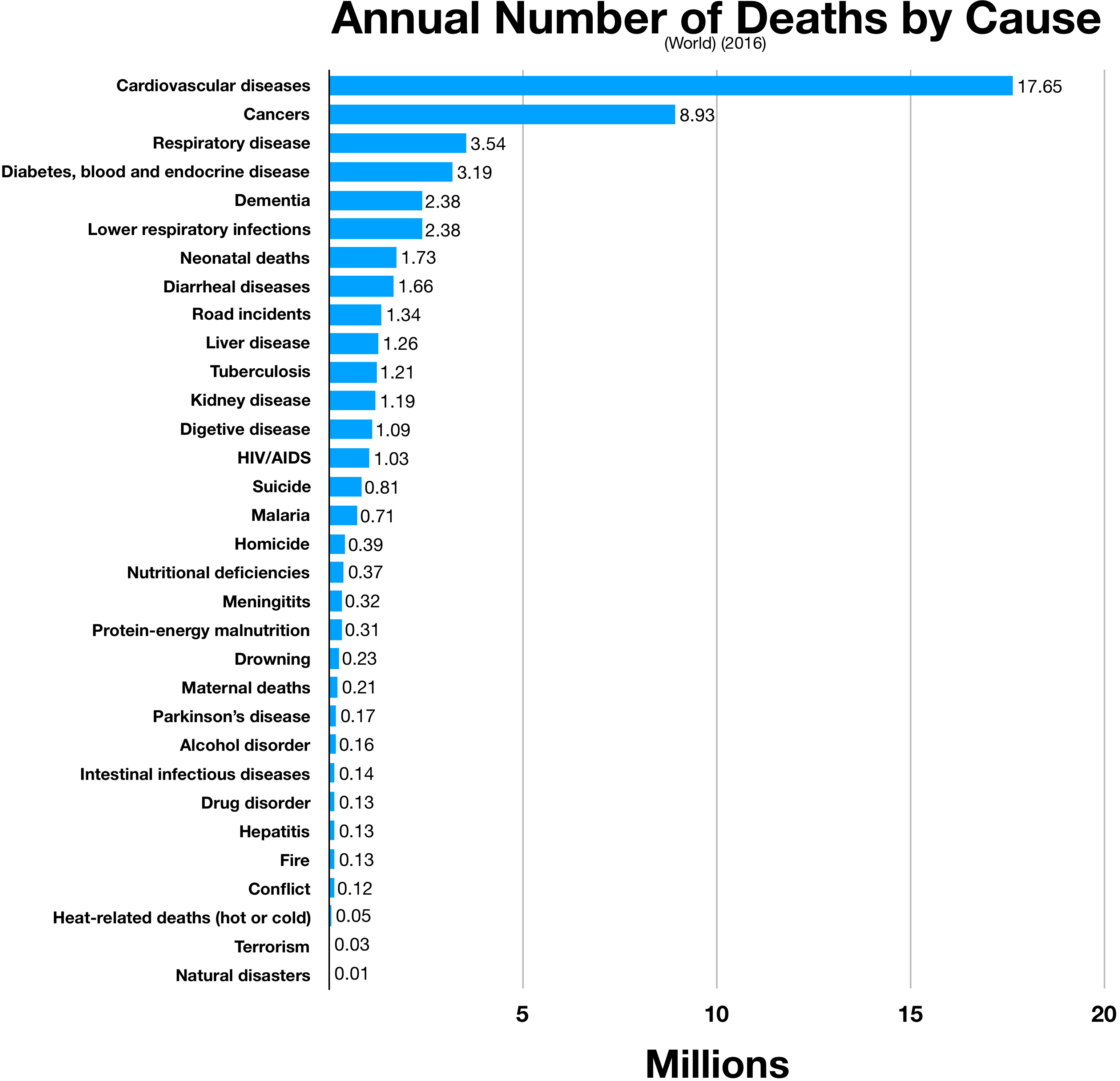|
Letting Die
In non-consequentialist ethical thought, there is a moral distinction between killing and letting die. Whereas killing involves intervention, letting die involves withholding care. Also in medical ethics there is a moral distinction between euthanasia and letting die. Legally, patients often have a right to reject life-sustaining care, in areas that do not permit euthanasia. See also * Passive euthanasia * ''Vacco v. Quill'' * Right to die The right to die is a concept based on the opinion that human beings are entitled to end their life or undergo voluntary euthanasia. Possession of this right is often understood that a person with a terminal illness, incurable pain, or without ... * Do not resuscitate * Trolley problem References Further reading * Bennett Jonathan (1993), 'Negation and abstention: two theories of allowing' in B. Steinbock and A. Norcross (eds.), ''Killing and Letting Die'', pp. 230-56, New York: Fordham University Press. Causes of death Medical ... [...More Info...] [...Related Items...] OR: [Wikipedia] [Google] [Baidu] |
Consequentialist
In ethical philosophy, consequentialism is a class of normative, teleological ethical theories that holds that the consequences of one's conduct are the ultimate basis for judgment about the rightness or wrongness of that conduct. Thus, from a consequentialist standpoint, a morally right act (or omission from acting) is one that will produce a good outcome. Consequentialism, along with eudaimonism, falls under the broader category of teleological ethics, a group of views which claim that the moral value of any act consists in its tendency to produce things of intrinsic value.Teleological Ethics " ''''. via ... [...More Info...] [...Related Items...] OR: [Wikipedia] [Google] [Baidu] |
Ethics
Ethics or moral philosophy is a branch of philosophy that "involves systematizing, defending, and recommending concepts of right and wrong behavior".''Internet Encyclopedia of Philosophy'' The field of ethics, along with aesthetics, concerns matters of value; these fields comprise the branch of philosophy called axiology. Ethics seeks to resolve questions of human morality by defining concepts such as good and evil, right and wrong, virtue and vice, justice and crime. As a field of intellectual inquiry, moral philosophy is related to the fields of moral psychology, descriptive ethics, and value theory. Three major areas of study within ethics recognized today are: # Meta-ethics, concerning the theoretical meaning and reference of moral propositions, and how their truth values (if any) can be determined; # Normative ethics, concerning the practical means of determining a moral course of action; # Applied ethics, concerning what a person is obligated (or per ... [...More Info...] [...Related Items...] OR: [Wikipedia] [Google] [Baidu] |
Murder
Murder is the unlawful killing of another human without justification or valid excuse, especially the unlawful killing of another human with malice aforethought. ("The killing of another person without justification or excuse, especially the crime of killing a person with malice aforethought or with recklessness manifesting extreme indifference to the value of human life.") This state of mind may, depending upon the jurisdiction, distinguish murder from other forms of unlawful homicide, such as manslaughter. Manslaughter is killing committed in the absence of ''malice'',This is "malice" in a technical legal sense, not the more usual English sense denoting an emotional state. See malice (law). brought about by reasonable provocation, or diminished capacity. ''Involuntary'' manslaughter, where it is recognized, is a killing that lacks all but the most attenuated guilty intent, recklessness. Most societies consider murder to be an extremely serious crime, and thus that ... [...More Info...] [...Related Items...] OR: [Wikipedia] [Google] [Baidu] |
Medical Ethics
Medical ethics is an applied branch of ethics which analyzes the practice of clinical medicine and related scientific research. Medical ethics is based on a set of values that professionals can refer to in the case of any confusion or conflict. These values include the respect for autonomy, non-maleficence, beneficence, and justice. Such tenets may allow doctors, care providers, and families to create a treatment plan and work towards the same common goal. It is important to note that these four values are not ranked in order of importance or relevance and that they all encompass values pertaining to medical ethics. However, a conflict may arise leading to the need for hierarchy in an ethical system, such that some moral elements overrule others with the purpose of applying the best moral judgement to a difficult medical situation. Medical ethics is particularly relevant in decisions regarding involuntary treatment and involuntary commitment. There are several codes of conduct. ... [...More Info...] [...Related Items...] OR: [Wikipedia] [Google] [Baidu] |
Euthanasia
Euthanasia (from el, εὐθανασία 'good death': εὖ, ''eu'' 'well, good' + θάνατος, ''thanatos'' 'death') is the practice of intentionally ending life to eliminate pain and suffering. Different countries have different euthanasia laws. The British House of Lords select committee on medical ethics defines euthanasia as "a deliberate intervention undertaken with the express intention of ending a life, to relieve intractable suffering". In the Netherlands and Belgium, euthanasia is understood as "termination of life by a doctor at the request of a patient". The Dutch law, however, does not use the term 'euthanasia' but includes the concept under the broader definition of "assisted suicide and termination of life on request". Euthanasia is categorized in different ways, which include voluntary, non-voluntary, or involuntary. [...More Info...] [...Related Items...] OR: [Wikipedia] [Google] [Baidu] |
Passive Euthanasia
Euthanasia (from el, εὐθανασία 'good death': εὖ, ''eu'' 'well, good' + θάνατος, ''thanatos'' 'death') is the practice of intentionally ending life to eliminate pain and suffering. Different countries have different euthanasia laws. The British House of Lords select committee on medical ethics defines euthanasia as "a deliberate intervention undertaken with the express intention of ending a life, to relieve intractable suffering". In the Netherlands and Belgium, euthanasia is understood as "termination of life by a doctor at the request of a patient". The Dutch law, however, does not use the term 'euthanasia' but includes the concept under the broader definition of "assisted suicide and termination of life on request". Euthanasia is categorized in different ways, which include voluntary, non-voluntary, or involuntary. [...More Info...] [...Related Items...] OR: [Wikipedia] [Google] [Baidu] |
Vacco V
Dennis C. Vacco (born August 16, 1952) is an American lawyer and Republican Party politician. He graduated with a B.A. from Colgate University in 1974, a J.D. from the University at Buffalo Law School in 1978, and was admitted to the New York State bar in 1979. He is to date the last Republican to serve as New York Attorney General. Background Vacco was born in Buffalo, New York, and was raised in the western region of upstate New York. Political career As Erie County Assistant District Attorney Vacco was an Assistant District Attorney of Erie County, New York from 1978 to 1988, and United States Attorney for the Western District of New York from 1988 until the beginning of the Clinton administration in 1993. As Attorney General of New York Vacco was the Attorney General of New York from January 1, 1995 to December 31, 1998. 1994 election In 1994, Vacco defeated Karen Burstein, the Democratic nominee. One week before the election, Staten Island Borough President Gu ... [...More Info...] [...Related Items...] OR: [Wikipedia] [Google] [Baidu] |
Right To Die
The right to die is a concept based on the opinion that human beings are entitled to end their life or undergo voluntary euthanasia. Possession of this right is often understood that a person with a terminal illness, incurable pain, or without the will to continue living, should be allowed to end their own life, use assisted suicide, or to decline life-prolonging treatment. The question of who, if anyone, may be empowered to make this decision is often subject of debate. Religious views on suicide vary from the Hindu and Jain practices of non-violent suicide through fasting ( Prayopavesa and '' Santhara'', respectively) to considering it a grave sin, as in Catholicism. Ethics The preservation and value of life have led to many medical advancements when it comes to treating patients. New devices and the development of palliative care have allowed humans to live longer than before. Prior to these medical advancements and care, the lifespans of those who were unconscious, minim ... [...More Info...] [...Related Items...] OR: [Wikipedia] [Google] [Baidu] |
Do Not Resuscitate
A do-not-resuscitate order (DNR), also known as Do Not Attempt Resuscitation (DNAR), Do Not Attempt Cardiopulmonary Resuscitation (DNACPR), no code or allow natural death, is a medical order, written or oral depending on country, indicating that a person should not receive cardiopulmonary resuscitation (CPR) if that person's heart stops beating. Sometimes these decisions and the relevant documents also encompass decisions around other critical or life-prolonging medical interventions. The legal status and processes surrounding DNR orders vary from country to country. Most commonly, the order is placed by a physician based on a combination of medical judgement and patient involvement. Basis for choice Interviews with 26 DNR patients and 16 full code patients in Toronto in 2006-9 suggest that the decision to choose do-not-resuscitate status was based on personal factors including health and lifestyle; relational factors (to family or to society as a whole); and philosophical f ... [...More Info...] [...Related Items...] OR: [Wikipedia] [Google] [Baidu] |
Trolley Problem
The trolley problem is a series of thought experiments in ethics and psychology, involving stylized ethical dilemmas of whether to sacrifice one person to save a larger number. The series usually begins with a scenario in which a runaway tram or trolley is on course to collide with and kill a number of people (traditionally five) down the track, but a driver or bystander can intervene and divert the vehicle to kill just one person on a different track. Then other variations of the runaway vehicle, and analogous life-and-death dilemmas (medical, judicial etc.) are posed, each containing the option to either do nothing, in which case several people will be killed, or intervene and sacrifice one initially "safe" person to save the others. Opinions on the ethics of each scenario turn out to be sensitive to details of the story that may seem immaterial to the abstract dilemma. The question of formulating a general principle that can account for the differing judgments arising in di ... [...More Info...] [...Related Items...] OR: [Wikipedia] [Google] [Baidu] |
Causes Of Death
The following is a list of the causes of human deaths worldwide for different years arranged by their associated mortality rates. In 2002, there were about 57 million deaths. In 2005, according to the World Health Organization (WHO) using the International Statistical Classification of Diseases and Related Health Problems (ICD), about 58 million people died. In 2010, according to the Institute for Health Metrics and Evaluation, 52.8 million people died. In 2016, the WHO recorded 56.7 million deaths with the leading cause of death as cardiovascular disease causing more than 17 million deaths (about 31% of the total) as shown in the chart to the side. Some causes listed include deaths also included in more specific subordinate causes, and some causes are omitted, so the percentages may only sum approximately to 100%. The causes listed are relatively immediate medical causes, but the ultimate cause of death might be described differently. For example, tobacco smoking often cause ... [...More Info...] [...Related Items...] OR: [Wikipedia] [Google] [Baidu] |







